Digital Twin: a new paradigm of thinking
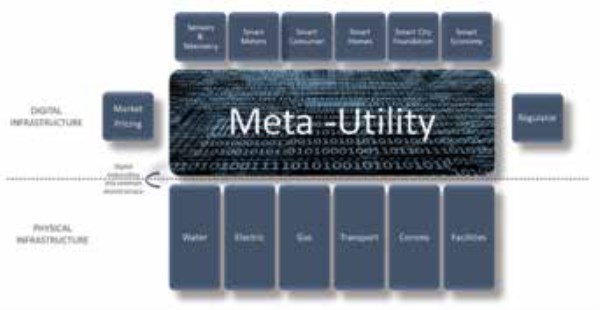
The distinctions between our digital, physical and biological worlds is blurring, and technology is advancing faster than ever before. Digital Twins are changing the way we design, build, operate and integrate our physical, regulatory, social, and economic infrastructures and the services they deliver.
4th Industrial Revolution
Digital Twins are a key enabler for the emerging cyber-physical paradigm often referred to as the 4th Industrial Revolution (Industry 4.0). Digital Twins will build greater agility and resilience into our supply chains and built environment and will improvement human-centric quality of design to make places more liveable while also ensuring construction with digital fabrication is more productive, affordable and safer.
Figure 1 Meta Utilities will evolve as Industry 4.0 business models to more effectively facilitate and curate digital twins for traditional utility services. They will become one of the building blocks for Meta Cities (Richard Simpson, Meta Moto)
A Digital Twin integrates sensors and actuators (Internet of Things) with Artificial Intelligence (AI), geometric models, machine learning and software analytics. Digital Twins are framed by Digital Threads built from graph data models to create sentient digital simulations that update and change in synchrony with their physical counterparts. A mature digital twin continuously learns and updates itself (self-heal) from multiple sources to represent its near real-time status, working condition or position.
Connected and Autonomous Vehicles (CAV) will rely upon a Digital Twin framework to create accurate real-time models to connect to their environment, anticipate behaviours and other road users. They will use multiple modalities of sensors, AI, networks and high definition 3D maps to mirror the physical and dynamic complexities to ensure the highest standards of safety for passengers and pedestrians are maintained.
For the built environment we are now beginning to see examples of this approach being applied more generally in major infrastructure and utilities projects, and progressive asset management applications.
In Melbourne, South East Water’s innovative pilot project for autonomous sewer spill management (OptiFlow) offers an excellent example of a mature automated Digital Twin in action. This Digital Twin reduces risks of beach contamination by sewer spills through intricate real-time cyberphysical modelling of tides, weather, 3D terrain and pipe network topologies, pumps and hydraulic flows. Overload scenarios can be predicted and more effectively managed through the predictive configuration of valves and pump actions.
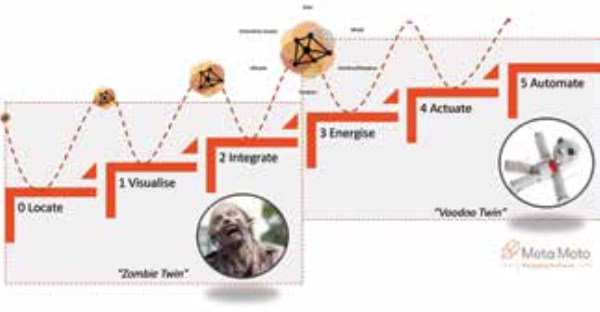
Figure 2 Digital Twin maturity continuum. Multi-dimensional expansion of data, information model, interfaces, analytics, whole supply chain lifecycle, and Granular scale, and value is mapped against the Digital Twin’s sentient state. The ‘Zombie’ state is activated into a more sentient ‘Voodoo’ state through Internet of Things (IoT)(Richard Simpson, Meta Moto)
Regulatory Twin
Regulatory Twins are a class of Digital Twin used to spatially express regulations. Our cities and other lives will become increasingly influenced by many types of regulatory twins. These controls will steward access to sunlight and views, maintain comfortable microclimates, control odours and contaminations. They will also have applications in the dynamic designation of pandemic hotspots, and geo-fence risks during natural disasters such as bushfires.
By 2023, the Digital Cadastre Modernisation Project will provide more spatially accurate regulatory twin of 3D property boundaries. The Cadastre defines ownership rights, restrictions and responsibilities (RRR).
Regulatory twins are coupled to the datum which will shift from the plate-fixed (static) datum we have today to an earth-fix (dynamic) datum. An earth-fixed datum accounts for the 4-dimensional (time and space) dynamics of earth’s tectonic plate movements by allowing tectonic plates. In 2020, Australian Governments made the coordinate shift from GDA94 to GDA2020. GDA2020 is a static datum with a reference date of 1st January 2020. The Australian Terrestrial Reference Frame (ATRF) is an earth-fixed (dynamic) datum currently being implemented and concluded by 2023. This will enable unprecedented precision and direct interoperability with Global Navigation Satellite System (GNSS) measurements. The static GDA2020 datum will coexist with ATRF and eventually will be superseded by it. When this happens, all the referenced regulatory twins will become dynamic.
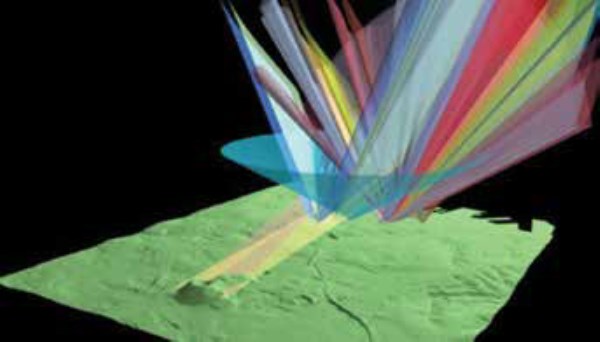
Figure 3 An early example of a 4-D regulatory twin defining the 27 sunlight performance controls generated for every moment of the year and superimposed with static corridors for volcanic cone view protection of Mt Eden. This pioneering project was undertaken for Auckland City Council during the transition from the Town and County Planning Act to new paradigm of the Resource Management Act (Richard Simpson, Cadabra (1988))
Coupling a Digital Twin with the physical world demands continued investment in sustaining the relationships. Incentives need to be introduced to ensure this coupling is maintained. These incentives may be derived from demand-side rather than more traditional supply-side management of the digital and physical assets. Our property tax systems today are medieval legacies and been around since King John signed the Magna Carta in 1215. A new demand-side paradigm could be based upon performance controls informed by Digital Twin using near-time remotely sensed data sourced from sensors. The construct of the performance control would ensure there is legal incentive to invest in the maintenance of the twin relationships and ensuring more sustainable outcomes are achieved. These dynamic controls expressed as regulatory twins could be tuned to create a language of progression for improving community well-beings.
Monetary Twin
Another way to incentivise is through the establishment of a commodity based monetary system in which the ‘truth’ is encapsulated within a Digital Twin (instead of Carbon, Gold, Silver etc) is made the unit of value and physically used as money. This ‘truth’ value of a Digital Twin could then be derived from the veracity, data provenance and other measures of representational of the asset states. A cryptocurrency is digital asset designed to work as a medium of exchange that uses strong cryptography to secure financial transactions, control the creation of additional units, and verify the transfer of assets. A Digital Twin extends this cryptocurrency seed with additional property dimensions such as lifecycle, granularity, and other spatial and topological associations
Digital Earth – the ultimate Digital Twin
As ‘smart’ building blocks of a Digital Earth, Digital Twins will serve as a digital manifestation of the physical, social and regulatory world around us. They integrate multi-dimensional geometric representations, internet of things, artificial intelligence (AI) and analytics. Graph based digital threads trace all lifecycle transactions and associations to ensure the integrity and value of this cyber-physical coupling.
In these challenging and uncertain times there is a compelling necessity and exciting potential for Digital Earth as a knowledge amplifier for ensuring the safe wellbeing of humanity and our planet. A Digital Earth is critical for addressing the challenges we face with climate change and pandemics – it will become the definitive scientific, technological and evolutionary cultural achievement of the 21st Century.
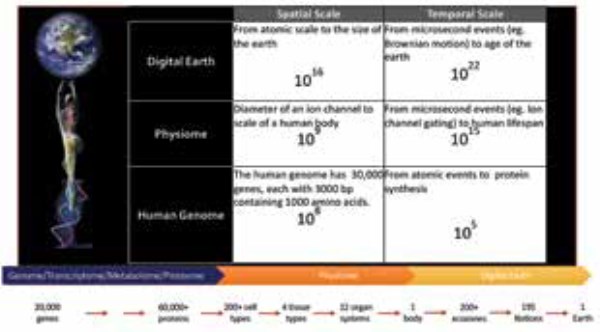
Figure 4 The Scientific continuum from Human Genome to the Digital Earth, Adapted from Hunter, PJ and Borg, TK. Integration from proteins to organs: The Physiome Project. Nature Reviews Molec & Cell Biol. 4:237-243, 2003 (Richard Simpson, Meta Moto)
Conclusion
There are remedial lessons to learn from this current pandemic about appreciating how we are all connected, and how technologies can shape our daily existences and our survival outcomes. In the past we have embraced a vision of a world of machines for living in and enabling our mobility on demand. Until now we have only superficially applied technologies to conveniently interpret the realities of the world as a simple metaphor. This has so often given us a mistaken mental picture of possibilities and led us astray. There is now some urgency to rethink the design of our habitats, prioritise the adoption of Industry 4.0 business models, and apply digital twins to enable more objective evidence based decision making and build more liveable and resilient cities.
VERTIMAX Australia
It is with great pleasure to Introduce Vertimax Australia to the Strata community. VERTIMAX Australia is an Australian owned and operated company with over 20 Years’ experience.
From our long history in providing electrical and mechanical servicing and repairs to iconic structures such the moving roofs of Melbourne, Equipment on the Melbourne Star and many other large and complex pieces of machinery we are now offering the Supply, Upgrades & Maintenance within the Car parking systems space.
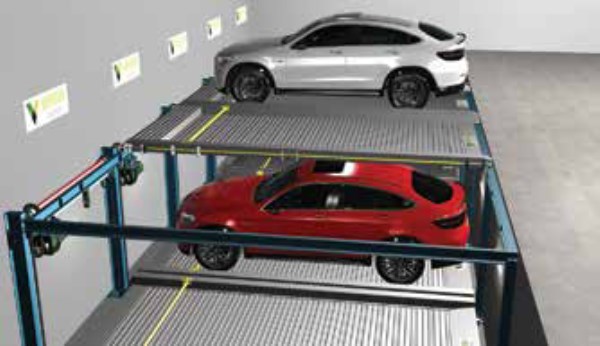
Being the only certified company to ISO 9001, 14001 and 45001 operating in this space you will be able to rely on our system and procedures to meet and exceed your expectations when it comes to servicing, your car parking system.
DRIVING Australia’s CAR PARKING SYSTEMS TECHNOLOGY
Our research has told us that the industry is looking for that company that will do what they say and do it when they say it will be done, has the depth to provide 24/7 emergency call outs, as well as the systems and procedures to ensure that all works are documented and streamlined in a manner that ensures timely and concise reporting.
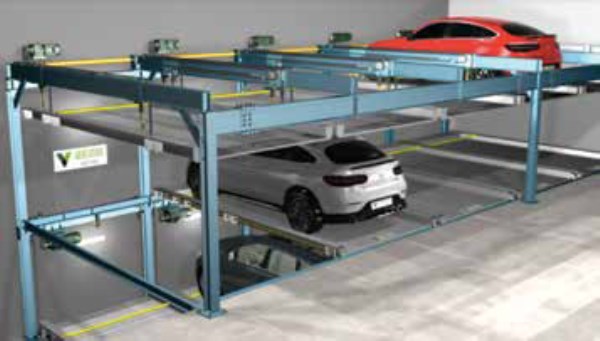
With our 35 plus staff and our commitment to continuous improvement this is what we live for. Having already developed key relationships within the industry and receiving positive feedback on our services we are looking to build on our existing 250 plus units we currently service.
With the backing of our various manufacturing partners and our inhouse engineering knowledge we are able to service all brands of car parking systems.
View Comments
(0)